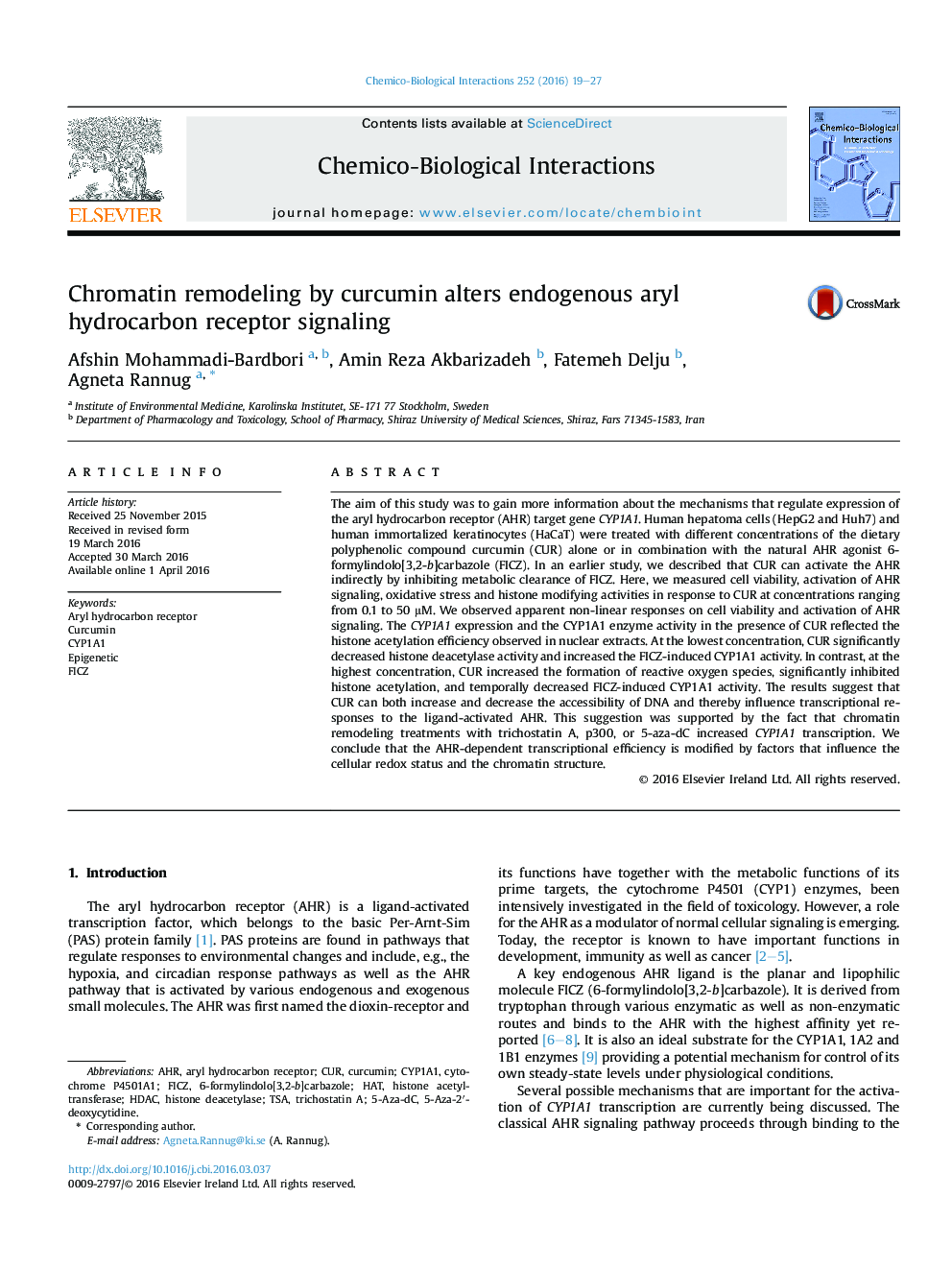| Article ID | Journal | Published Year | Pages | File Type |
|---|---|---|---|---|
| 2579869 | Chemico-Biological Interactions | 2016 | 9 Pages |
•Low dose curcumin (0.1 μM) stimulates FICZ-mediated CYP1A1 expression/activity.•Higher doses cause ROS-dependent transient repression of CYP1A1 expression/activity.•Curcumin represses CYP1A1 expression by histone de-acetylation and DNA methylation.
The aim of this study was to gain more information about the mechanisms that regulate expression of the aryl hydrocarbon receptor (AHR) target gene CYP1A1. Human hepatoma cells (HepG2 and Huh7) and human immortalized keratinocytes (HaCaT) were treated with different concentrations of the dietary polyphenolic compound curcumin (CUR) alone or in combination with the natural AHR agonist 6-formylindolo[3,2-b]carbazole (FICZ). In an earlier study, we described that CUR can activate the AHR indirectly by inhibiting metabolic clearance of FICZ. Here, we measured cell viability, activation of AHR signaling, oxidative stress and histone modifying activities in response to CUR at concentrations ranging from 0.1 to 50 μM. We observed apparent non-linear responses on cell viability and activation of AHR signaling. The CYP1A1 expression and the CYP1A1 enzyme activity in the presence of CUR reflected the histone acetylation efficiency observed in nuclear extracts. At the lowest concentration, CUR significantly decreased histone deacetylase activity and increased the FICZ-induced CYP1A1 activity. In contrast, at the highest concentration, CUR increased the formation of reactive oxygen species, significantly inhibited histone acetylation, and temporally decreased FICZ-induced CYP1A1 activity. The results suggest that CUR can both increase and decrease the accessibility of DNA and thereby influence transcriptional responses to the ligand-activated AHR. This suggestion was supported by the fact that chromatin remodeling treatments with trichostatin A, p300, or 5-aza-dC increased CYP1A1 transcription. We conclude that the AHR-dependent transcriptional efficiency is modified by factors that influence the cellular redox status and the chromatin structure.
